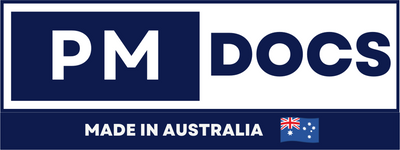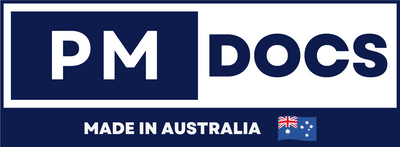Data Governance Policy Template Australia
Introduction
In today's digital age, data is one of the most valuable assets for any organization. However, with great power comes great responsibility. Ensuring that your data is managed effectively while complying with regulations is essential. This is where a data governance policy comes into play. In this article, we will walk you through the process of creating a data governance policy tailored for Australian organizations.

What Is A Data Governance Policy?
A data governance policy is a set of guidelines and processes that dictate how data is to be managed, accessed, and protected within an organization. It ensures that the data is accurate, consistent, and secure. For Australian companies, it is crucial to align with the country's legal and regulatory standards.
Importance of a Data Governance Policy
-
Data Integrity: Ensures that data remains accurate and reliable over time.
-
Security: Protects against data breaches and unauthorized access.
-
Compliance: Ensures adherence to laws like the Privacy Act 1988 and the Notifiable Data Breaches (NDB) scheme.
Steps To Build A Data Governance Policy
Creating a data governance policy involves several steps. Here’s a simplified process to guide you:
Step 1: Identify Your Goals - Before drafting a policy, it’s important to know what you want to achieve. Is it compliance, data quality improvement, or risk reduction? Defining clear objectives will guide your policy development.
Step 2: Assemble a Data Governance Team - To ensure a comprehensive policy, gather a team that includes stakeholders from IT, legal, and business units. Each member will bring a unique perspective on data handling and protection.
Step 3: Assess Current Data Practices - Evaluate your current data management processes to identify gaps and areas for improvement. This assessment will inform the necessary changes and updates for your policy.
Step 4: Define Data Governance Framework - A data governance framework outlines the structure for managing data. It includes roles and responsibilities, data standards, and processes for data lifecycle management. Consider the following components:
-
Data Stewardship: Assign roles for data management and oversight.
-
Data Quality Management: Establish standards for data accuracy and consistency.
-
Data Security: Define measures to protect data from threats.
Step 5: Develop the Policy Document - Draft the policy document using simple, clear language. It should cover:
-
Purpose and Scope: What is the policy for, and what does it cover?
-
Roles and Responsibilities: Who is responsible for what?
-
Data Management Procedures: How will data be collected, stored, and processed?
-
Security Measures: What are the protocols for data protection?
-
Compliance: How will you ensure adherence to relevant laws and standards?
Step 6: Implement the Policy - Once the policy is in place, it's time to implement it. This involves training staff, updating systems, and integrating the policy into everyday operations. Ensure that all employees understand their roles and responsibilities.
Step 7: Monitor and Review - Data governance is an ongoing process. Regularly review and update your policy to accommodate new data types, technologies, and regulatory changes. Monitoring ensures that the policy remains effective and relevant.
Data Governance Frameworks In Australia
Australia has specific frameworks that help guide data governance practices, such as:
-
Privacy Act 1988: Governs the handling of personal information.
-
Notifiable Data Breaches (NDB) Scheme: Mandates reporting of data breaches.
-
Australian Government Agencies Privacy Code: Sets out obligations for federal agencies in managing personal information.
Best Practices For Australian Organizations
-
Stay Informed: Regularly update your knowledge of Australian data laws and regulations.
-
Engage Stakeholders: Foster collaboration across departments for comprehensive data management.
-
Invest in Training: Provide ongoing education for employees about data protection and governance.
Conclusion
Building a data governance policy is not just about compliance; it's about fostering trust and integrity in your data management practices. By following the steps outlined above, Australian organizations can create effective policies that protect their data assets and ensure regulatory compliance. Remember, the key to successful data governance is continuous improvement and adaptation to the ever-evolving data landscape. Incorporating these guidelines will not only safeguard your organization's data but also enhance its overall operational efficiency and reputation.




